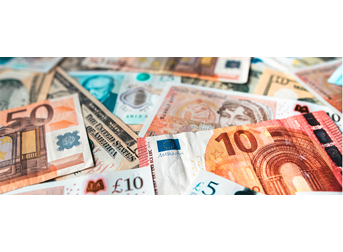Daily Brief

Changing rate expectations
4 minute readHigher and wider
As far as the day’s events and economic data were concerned, nothing made much difference on Monday. The NZ dollar (NZD) came out as the comfortable winner, helped by the inflation spike and its promise of higher interest rates, but the Kiwi’s average 0.4% gain was a long way from dramatic.
The Reserve Bank of New Zealand (NZD) is seen as most likely to take interest rates higher, having shown a fortnight ago that it is in a mind to do so. However, judging by the broadly-based upward trend of bond yields, investors are coming to the conclusion that central banks almost everywhere are thinking similar thoughts. To take sterling (GBP) as an example, less than six months ago the market was pricing in a quarter-percentage-point rate increase over the next three years. Today’s futures prices anticipate that Bank Rate will be a full percentage point higher within a year.
Even the Reserve Bank of Australia (AUD) is now being brought into that fold. The minutes of October’s policy meeting clearly state, once again, that the conditions necessary for higher interest rates are unlikely to be met before 2024. Yet when the minutes came out this morning the Aussie moved higher. Investors evidently do not believe the RBA will be able to wait that long.
Canadian caution
While the antipodean dollars (AUD and NZD) and the Norwegian krone (NOK) took the first three places on Monday, the Loonie (CAD) was further down the field, just about unchanged on average. Neither the Canadian ecostats nor the Bank of Canada’s quarterly Business Outlook Survey fostered unqualified optimism.
Housing starts (CAD) saw a fourth consecutive month of decline, reaching a nine-month low. The BoC’s business report (CAD) started well – “Firms anticipate stronger demand as pandemic conditions improve” – but quickly went downhill – “However, many businesses face supply constraints that will limit their sales and put upward pressure on their costs”. Although the supply constraints narrative is by no means unique to Canada, its mention by the central bank was not positive for the currency.
The US data (USD) went no further than industrial production and the NAHB Housing Market Index. Industrial output fell 1.3% in September, dashing expectations of a 0.2% increase. A four-point rise in the NAHB index was driven by strong consumer demand “despite growing affordability challenges stemming from rising material prices and shortages”. It was not enough to save the dollar (USD), which was the day’s weakest performer with an average loss of 0.5%.
Lots to say
Today’s agenda almost contains more speeches than statistics, with the European Central Bank (EUR) and the Federal Reserve (USD) both in evidence. Ahead of London’s opening on Wednesday the UK inflation data (GBP) come out at 07:00.
This morning Switzerland (CHF) proved yet again that a weak currency is not essential to a balance of trade surplus. It is more than a decade since the country reported a monthly deficit. The only other European ecostats today are for Eurozone construction output (EUR). After lunch the US data (USD) cover building permits and housing starts. Tomorrow’s headline rate of UK inflation (GBP) is pencilled in at 3.2%.
The ECB speakers (EUR) are board members Frank Elderson and Fabio Panetta, and Chief Economist Philip Lane. The Fed’s representatives (USD) will be Governors Michelle Bowman and Christopher Waller.
Weekly roundup



